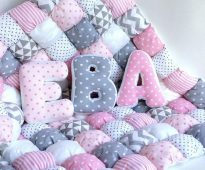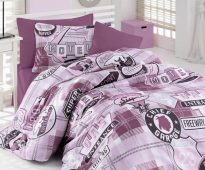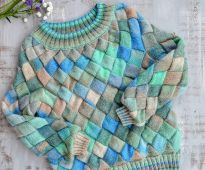 We sew a blanket bonbon
We sew a blanket bonbon
What does the crochet fillet napkin mean?
A simple way to make yourself a rectangular or oval beautiful tablecloth is to use the technique of knitting loin. It lies in the fact that with the help of ordinary thin threads and a hook you can make a canvas imitating a lace pattern. But at the same time it turns out much more practical than the thin original.
We all know the elegant napkins that often decorate the room.
They can be used as headrests, stands for vases with flowers, as well as capes for pillows.
Content
- 1 What is knitting loin?
- 2 What can be connected with fillet technique?
- 3 How is knitting a filet?
- 4 Napkin-tablecloth in the technique of loin knitting
- 5 Direct scheme fillet napkins
- 6 Square napkins
- 7 Cloth with a large flower
- 8 Figured and rectangular knitting napkins
- 9 Oval napkins
- 10 Round napkins
- 11 Conclusion
- 12 VIDEO: Sirloin knitting do it yourself.
- 13 50 choices of napkins using the loin knitting technique:
What is knitting loin?
The technique of knitting loin came to Russia from Europe only at the end of the XIX century. It lies in the fact that with the help of a single hook and a skein of thread it was possible to create a product that would imitate an unusual pattern of lace that is rare and expensive at that time.
Napkins made with knitting loin look like a patterned net.
Like the lace, the fillet linen can have many variations of patterns and shapes. These are floral prints on a classic rectangular tablecloth or simply abstract shapes on a round napkin grid. But they all fit in accordance with the schemes prepared in advance.
They look so airy due to the fact that not a continuous canvas comes out of the hands of a skilled worker.
What can be connected with fillet technique?
Sirloin knitting became widespread in Russia in the XIX century. And literally in every house you could see things made in this technique:
- tablecloths on tables,
- window curtains
- napkins under flower pots,
- nets for fishermen
- some items of women's clothing,
- accessories in the form of capes on the shoulders.
In each subsequent row above the chain, a column (or several columns) is knitted, which are separated by new chains.
Next generation did not forget about the fillet technique. And some products are still used in modern interiors. For example, hand-woven napkins and tablecloths can be seen in such styles as: baroque, classicism, country, eco, chalets, shebbi-chic, etc.
Following the scheme, we get a mosaic pattern - an openwork product with a series of holes.
How is knitting a filet?
There are two options for creating a loin product: knitting and embroidery. Knitting involves a completely manual work: when the master with the help of the hook he makes all the elements of the grid, introducing a pattern into the canvas gradually.
Due to the fact that the number of gaps, as well as the columns is not fixed, the napkin often does not have a perfect geometric shape with right angles.
And embroidery using the fillet technique is no different from the classic one. In addition, the basis is not just fabric, but a ready-made checkered canvas, where you need to fill the necessary squares with a thread.
Napkins made with the help of this technique can have a different shape.
Important! No matter how much experience the knitting master had, it is worth starting with a rough version of the pattern. To do this, you must select a complex fragment from the entire picture and on a separate hook, collect a small number of loops. If you work out the knitting in advance, it will help to avoid unpleasant mistakes in the process of knitting the product itself.
Patterns with roses and other plant elements are very popular.
Napkin-tablecloth in the technique of loin knitting
Napkins and tablecloths, made in the technique of knitting loin, even though outwardly resemble the usual lace, but this is not quite so. In fact, such products are much stronger than this analogue, due to the weaving technique and the threads themselves. This allows you to make them more resistant to mechanical damage and at the same time they look neat in any design manifestation.
As a rule, such napkins are knitted from cotton, flax and viscose are also very popular.
Direct scheme fillet napkins
The direct fillet napkin scheme is created for those who do not want to complicate their work and deal with a huge number of loops to create a form. All that is needed is to dial a certain number of VIs and follow the given pattern. Those cells that are painted in the technique of reverse loops, and the rest - direct. Thus, a fillet blade is created that resembles a fine mesh with a pattern in the middle and an interesting openwork trim of 3 cm.
They will look even more original if you take a shiny thread with lurex or synthetic fiber yarn.
Square napkins
The scheme for creating a square napkin is quite simple, but in the end you still get an interesting filet on the table.
Depending on the thickness of the thread is chosen hook.
The size of the napkin is 90 by 90 cm, so to create the initial chain you will have to collect a sufficiently large number of loops. Total: 106 VP for the base, 3 VP for lifting and 2 more VP.
Sirloin knitting begins with the fact that the first row creates a column for the tilt. It connects to the 9th link of the chain. Then another 2 VPs match. The second column with a slope is attached to the 3 VP of the base of the chain. According to this principle, at least 35 sirloin cells should be knitted.
If the thread and hook are thin, you will end up with an almost weightless product, like a web, which looks very beautiful.
The next stage is the knitting of the straight and reverse rows, as shown in the diagram up to the 35th row. To complete the work, it must be tied according to the scheme 1, 2 and 3 up to the 67th row inclusive.
Cloth with a large flower
The usual square tablecloth in the “fillet” technique becomes much better if you decorate it with a large pattern in the middle. In this case, it is a huge flower, consisting of 8 petals.
You can capture the image of a rose in a napkin.
Important! In order to make such a large product as a tablecloth (more than 100 cm in length or width) keep its shape better, it is better to take threads that contain not only cotton, but also polyester not less than 56%.
Knitting begins with a set of chain of upper loops: 376 VP - the base, 3 VP - the rise. After which the formation of the form begins. To do this, perform 1 column with a slope, which is fixed with 5 VP base. This technique must be repeated to the end of the chain (for example, 374 VP = 374 columns with a slope).
When knitting napkins and tablecloths, it may be necessary to add or subtract the number of loops.
After you need to make loin knitting. It is carried out in the form of direct and inverse loops and is repeated up to the 125th row.
The tablecloth is completed with the usual strapping according to the scheme and connecting post.
Figured and rectangular knitting napkins
Figured knitting of napkins is a more complex form, which not every master who knows how to crochet is subject to.So, for example, if it is wrong to add loops in the same row, then instead of a neat oval, you can get a shape that you have not known in geometry until now. And the picture itself will turn into a work in the art-house style.
Fillet napkins fascinate the pattern of light and shadow, consisting of empty and dense cells.
Figured product can be supplemented with a grid of cells of unusual shape. They are usually knit from ordinary VP, but in size they are much larger and look prettier.
The form of a fillet napkin can be any - square, round, in the form of a long path, oval or figured.
Oval napkins
According to this scheme, the oval napkin will be made 64 by 80 cm in size. But depending on the desire, the length of the product can be continued by repeating the pattern twice.
Knit in this technique is easy and simple.
Knitting begins with the fact that with the help of a hook a chain of 44 loops is recruited, of which 22 VPs are the basis, and 3 VPs are allotted for lifting, plus another 13 VPs.
Products are very, very beautiful.
The main principle of creating an oval napkin with the help of a hook is to add and subtract cells in rows and along edges so that the product does not turn out round.
Round napkins
The size of the circle is determined at the stage of creating the middle of the product. Those. If spruce trees were originally taken, 8 loops, then judging by this scheme, the napkin will be 80 cm in diameter.
Handmade products have always been of particular interest.
On the spoke dial 8 VP and closed in a normal circle with the connecting column. After 1 row, 3 VPs are made for lifting, 1 STSN is placed in the ring, and the first stage is completed with CST.
The second row is connected with the previous one: 3 VP for lifting, 1 STSN is placed in the first VP of lifting, then 2 STSN is connected in STSN of the first row, and all of the CCT ends.
Napkins - a great way to decorate your home.
The third row: 3 VP for lifting and 1 EP for further transition, 1 STSN to the previous STSN, all completed in a row CCT.
And only after that begins knitting the main part of the napkin. 51 rows are assigned to this stage.
It is believed that napkins are exclusively for decoration.
Conclusion
Creating beautiful napkins and tablecloths for the home is not so easy. First, for this you need to have a lot of free time. Because with the help of a single hook, it is not easy to tie a tablecloth measuring 100 by 120 cm in one evening. And secondly, we need a lot of experience and knitting skills.
Handmade napkins will delight your eye.
Of course, on the Internet you can find a description of the process of creating a napkin or a scheme, but it is unlikely to repeat the drawing from the first time. Therefore, it is recommended to make “draft” versions of some drawings from schemes on other hooks. To repeat them without errors on the product itself.
If you decide to give a person a gift made with your own hands, this will be a valuable and pleasant surprise.
Important! In addition, such tablecloths are quite beautiful and strong, but they also need special care. In order for the product to retain its shape longer, and the threads are not rubbed, after the completion of the work it is necessary to wash and starch it to secure the result of their work.
VIDEO: Sirloin knitting do it yourself.
50 choices of napkins using the loin knitting technique:
 We sew a blanket bonbon
We sew a blanket bonbon
 How to quickly fill the blanket in the duvet cover
How to quickly fill the blanket in the duvet cover
 Standard Kitchen Towel Sizes
Standard Kitchen Towel Sizes
 Technique knitting enterlak - create beauty easily!
Technique knitting enterlak - create beauty easily!






